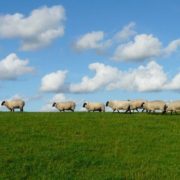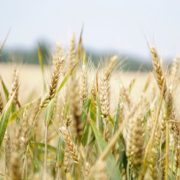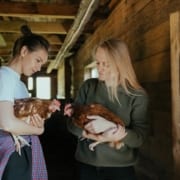Create a Greener Globe With a Sustainable Agriculture Course
Sustainability has become increasingly important in the agricultural sector, as it is no longer enough to be financially productive — environmental resources need to be robust for farms to survive. This course an ideal for anyone working in the agricultural industry, from farmers and farm services businesses to consultants and educators.
Our Certificate of Sustainable Agriculture will give you insights into “whole farm” planning, and how to make a farm more sustainable – both environmentally and economically. In this sustainable agriculture course, you will study the economic rules that apply to farm enterprise, and explore land management programs like permaculture, organic farming and biodynamics. You will also learn how to avoid serious soil and water degradation, undertake sustainable crop management techniques and evaluate the viability and potential of animal enterprises.
Learning Outcomes
Outcomes achieved by undertaking a sustainable agriculture course include:
- Learning about whole farm planning
- Exploring land management programs
- Gaining an understanding of sustainable ways of farming
- Studying natural and organic farming
- Gaining insights into permaculture
- Examining no-dig techniques
- Understanding biodynamics
- Learning about soils and growing media
- Exploring soil problems, erosion and soil structural decline
- Studying salinity and acidification and phytotoxicity
- Gaining insights into soil improvements
- Examining how to add organic matter to soils
- Understanding conservation tillage and cultivation techniques
- Learning about plant nutrition, soil life and cover crops
- Exploring water and the types of water storage
- Studying livestock water requirements
- Gaining insights into water problems and water quality
- Examining reed beds
- Understanding water-saving measures
- Learning about recycling
- Exploring swales and keylines
- Studying irrigation systems
- Gaining insights into land care
- Examining weed and tree management
- Understanding preventative measures
- Learning about timber lots and plantations
- Exploring windbreaks
- Studying wildlife corridors and habitats
- Gaining insights into pests and diseases
- Examining financial sustainability
- Understanding economic principles
- Learning how to develop a Farm Business Plan
- Exploring financial plans and how to control growth
- Gaining an understanding of value-adding
- Studying the enterprise mix
- Gaining insights into eco-tourism
- Examining broad management strategies
- Understanding better planning
- Learning about land care or land management
- Exploring new enterprises
And more!
Farming Trends On The Rise in 2021
Making the most of what we grow is one of the biggest focuses for the future of the agricultural industry. Here are some of the predicted trends that will give you plenty of inspiration for undertaking our sustainable agriculture course.
Better Reporting
On the back of Australia’s “clean-green” image, agricultural exports have captured a range of lucrative markets overseas. But there is growing demand to align this with more “granular” sustainability reporting in our own domestic markets.
This mirrors the world’s largest retailer, Walmart, declaring they will aim for zero-emission targets by 2040, and the European Green Deal, which proposes to make the continent climate neutral by 2050 via new laws for farming, recycling and biodiversity.
As a spokesperson for AgriFutures Australia commented, “We are going to have to align with these new international benchmarks. We know we are pretty efficient but we can’t share the real story because we don’t know how much carbon we are sequestering, or how much water and topsoil we’re using. We’re going to have to start measuring all of this to meet global expectations.”
Vertical Farming
Vertical farming essentially involves crops that are organised in tower formations inside climate-controlled greenhouses. A range of Australian businesses are taking vertical farming to the next level by combining it with hydroponic technology, including the Costa Group located in the Northern Tablelands of New South Wales.
Here, truss tomato seeds are planted in balsa rock, sealed in insulation pads, and set on gutters that hang from the ceilings of glass houses. The result? Seventy kilograms of tomatoes per square metre – around six times more than the best farmers in Australia can grow on soil.
As their spokesman commented, “Everything we do is about resource efficiency — how to grow more food using less land and less water. If you consider we will have to figure out how to feed 10 billion people by 2050, it’s one of the most important jobs in the world.”
Drone Technology
Drones are becoming a “must-have” for many farmers, as many traditional methods of managing and evaluating farm environments can be costly, time-consuming and resource-intensive. Operating a drone takes specialist training, including knowledge of Civil Aviation Safety Authority regulations, and drone technology can assist with:
- Crop monitoring. Satellite imagery offered the most advanced form of monitoring before the use of drones, but there were serious limitations. Images had to be ordered in advance and could only be taken once a day. The process was also costly and images were often inaccurate. Today, drone animations can reveal production inefficiencies and show the precise development of crops in “real” time at a fraction of the cost.
- Field and soil analysis. Drones can be instrumental in the successful start of a successful crop cycle, as, with the appropriate sensors, precise 3D maps can be generated. They can be valuable for the soil profile analysis that’s essential for planning seed planting patterns. After planting, they can also provide data for nitrogen-level management and irrigation strategies.
- Crop spraying. By integrating distance-measuring equipment, drones have the ability to rapidly adjust their altitude as the geography and topography varies. This means they can scan the ground and spray the correct amount of liquid at the right distance for even coverage, thus reducing the volume of chemicals penetrating groundwater.
- Health assessment. Drones integrated with the appropriate sensors can scan crops and identify the vigour and health of plants. Images can also indicate plants’ growth characteristics and monitor changes.
Seaweed Farming
Currently, there is only one commercial seaweed farm in Australia and it is located on New South Wales’ south coast. But with a range of seaweed-based applications currently in development, researchers believe we are well-positioned to make inroads into a global market that’s set to be worth billions by 2024.
One of the more promising applications is a methane-reducing additive for animal feed. CSIRO studies have shown that adding a small amount of a form of seaweed — Asparagopsis taxiformis — reduces the methane production of cattle by over 80 per cent. This is good news for the environment as, surprisingly, direct livestock emissions account for around ten per cent of Australia’s greenhouse gas emissions!
Alternative Proteins
Concerns over animal welfare, the environment and health are boosting the demand for alternative protein markets, and the CSIRO estimates it will have a combined value of over $7 billion by 2030. This includes crops like faba beans, lupins, chickpeas and lentils, as well as more unusual sources like algae and insects.
In fact, there are already more than fifty insect farmers across the country! Insect-based feed can be eaten by poultry, pigs and most household pets, and some manufacturers are even using insect protein to make energy bars and pasta for human consumption.
Native Flora
Australian native plants have been part of medicines and indigenous diets for thousands of years. Now, they are also tapping into locally sustainable food movements. Kakadu plums and wattleseed are already big sellers domestically, while lemon myrtle and finger limes have become lucrative export crops. Studies have also shown that plants like panicum (also known as native millet), can be turned into gluten-free flour that’s easier to grow and even more nutritious than wheat.
Undertake strategic agricultural planning processes to meet your desired sustainability goals with a sustainable agriculture course like our Certificate of Sustainable Agriculture.










